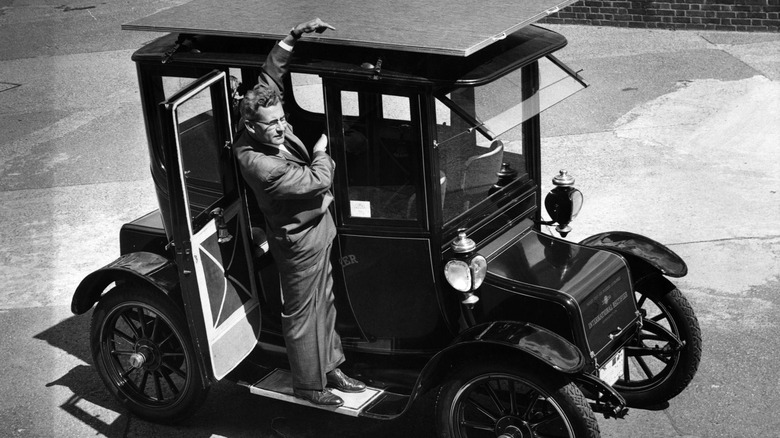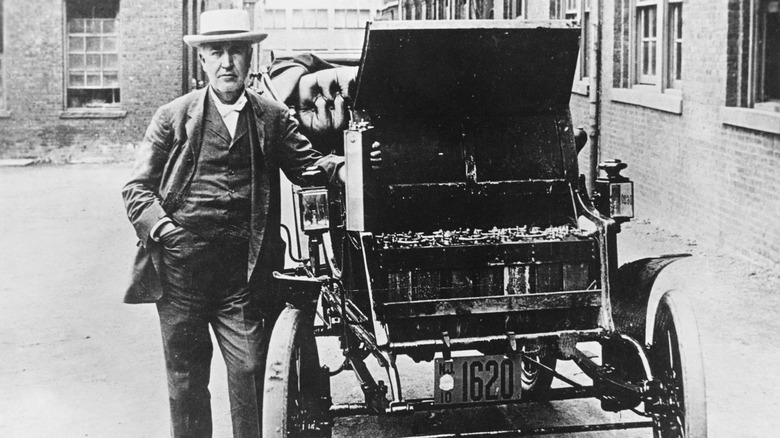Whatever Happened To The Baker Motor Vehicle Company?
There are numerous car companies from the early 1900s that have since gone out of business — like Duesenberg Motors Company and its iconic race cars — but when their product was electric vehicles, that tends to raise eyebrows. This was the fate of the Baker Motor Vehicle Company, which existed over 100 years ago as a pioneer in electric cars, long before anyone had heard of Tesla. While it seems like the concept of electric vehicles took multiple decades to become an approachable reality, early on they appeared as viable as internal-combustion engines, since at the time such cars were difficult to operate and came with countless operational issues.
Engineer Walter C. Baker founded the American Ball Bearing Company in 1895, and after seeing the advantages at the time in electric car technology, set off to make electric vehicles and created the Baker Motor Vehicle Company with some in-laws in 1899 in Cleveland, Ohio. Their first model, the Baker Imperial Runabout, debuted at the Automobile Club of America's First Annual Automobile Show in New York City as a two-seater with 3-4 hp and the now humble speeds of 6 mph or 12 mph, though standard at the time.
Baker set an asking price of $850, and one customer happy to pay that was Thomas Edison, choosing it as his first vehicle and giving the burgeoning company some notoriety. But it wasn't a random selection from a catalog or anything, as Edison helped contribute to the battery technology used in the vehicle.
A good, short run
In the next few years, Baker became one of the top producers of electric vehicles in the world and produced 800 cars with over a dozen models, while claiming its factory was the largest in the world. Edison wasn't the only famous customer — President William Howard Taft took the White House mobile and purchased a 1909 Baker for the first lady Helen Taft, and then later the 1912 Victoria model, which wound up being put to use by the next four first ladies as well.
A desire for higher speeds led to one of the first instances of misfortune for Baker. A speed trial was held in 1902 by the Automobile Club of America, and Baker entered a racing car that ultimately lost control and crashed into spectators, resulting in two deaths. Following another crash, Baker abandoned the record-breaking quest, though he is credited as the first person to cross the 100-mph barrier.
A series of mergers and the rising legitimacy of the internal-combustion engine contributed to Baker's end. Detroit Electric surpassed Baker in 1913 and a later merger with Cleveland automaker Rauch and Lang saw the company streamlined into Baker, Rauch, & Lang. They produced the Owen Magnetic together, but the Baker company stopped producing electric cars after 1915. And while a few commercial electric vehicles were produced afterwards, the company's run had essentially come to an end, just as the electric starter was being invented to make internal-combustion engine vehicles safer and more accessible.

